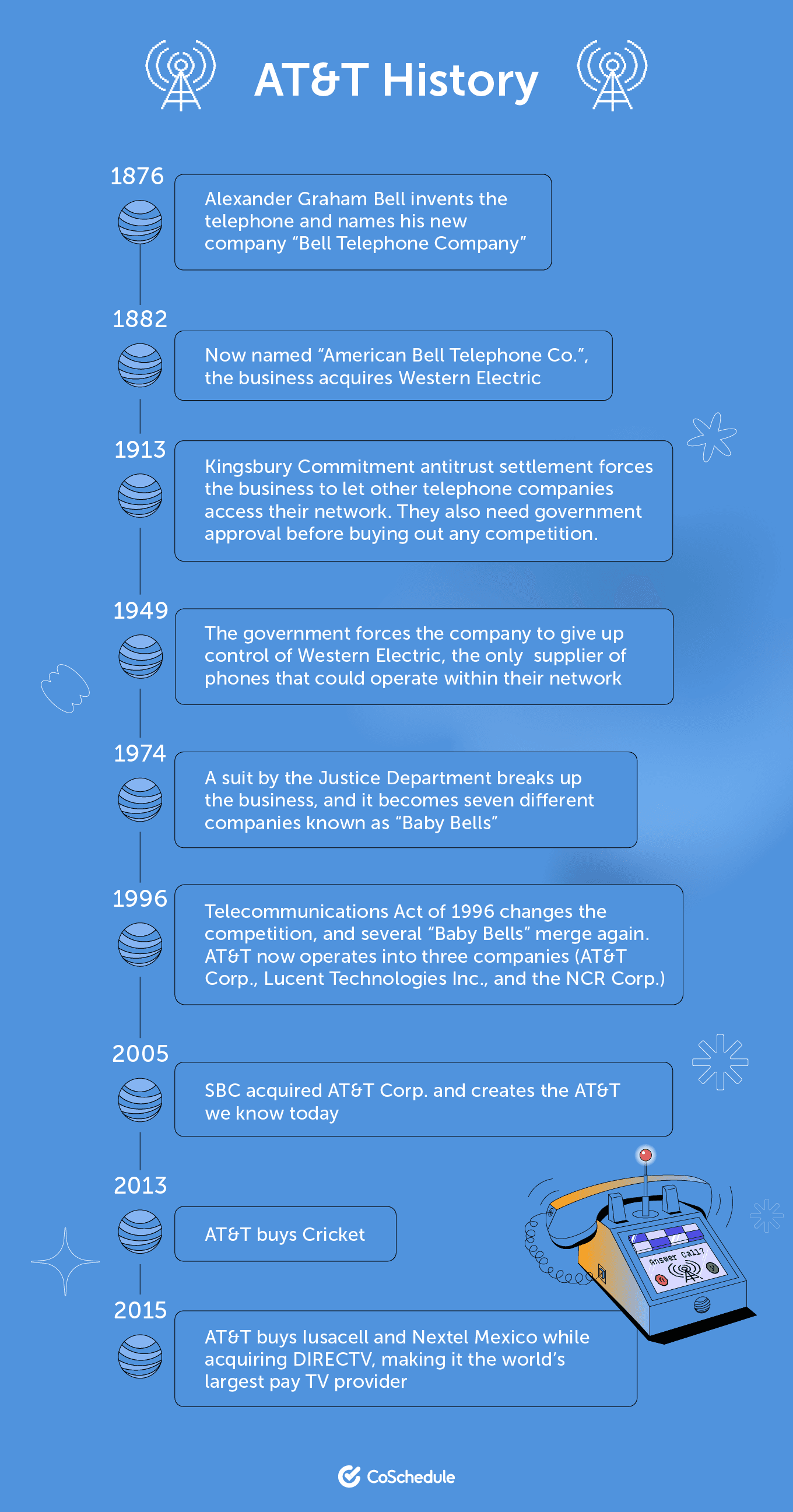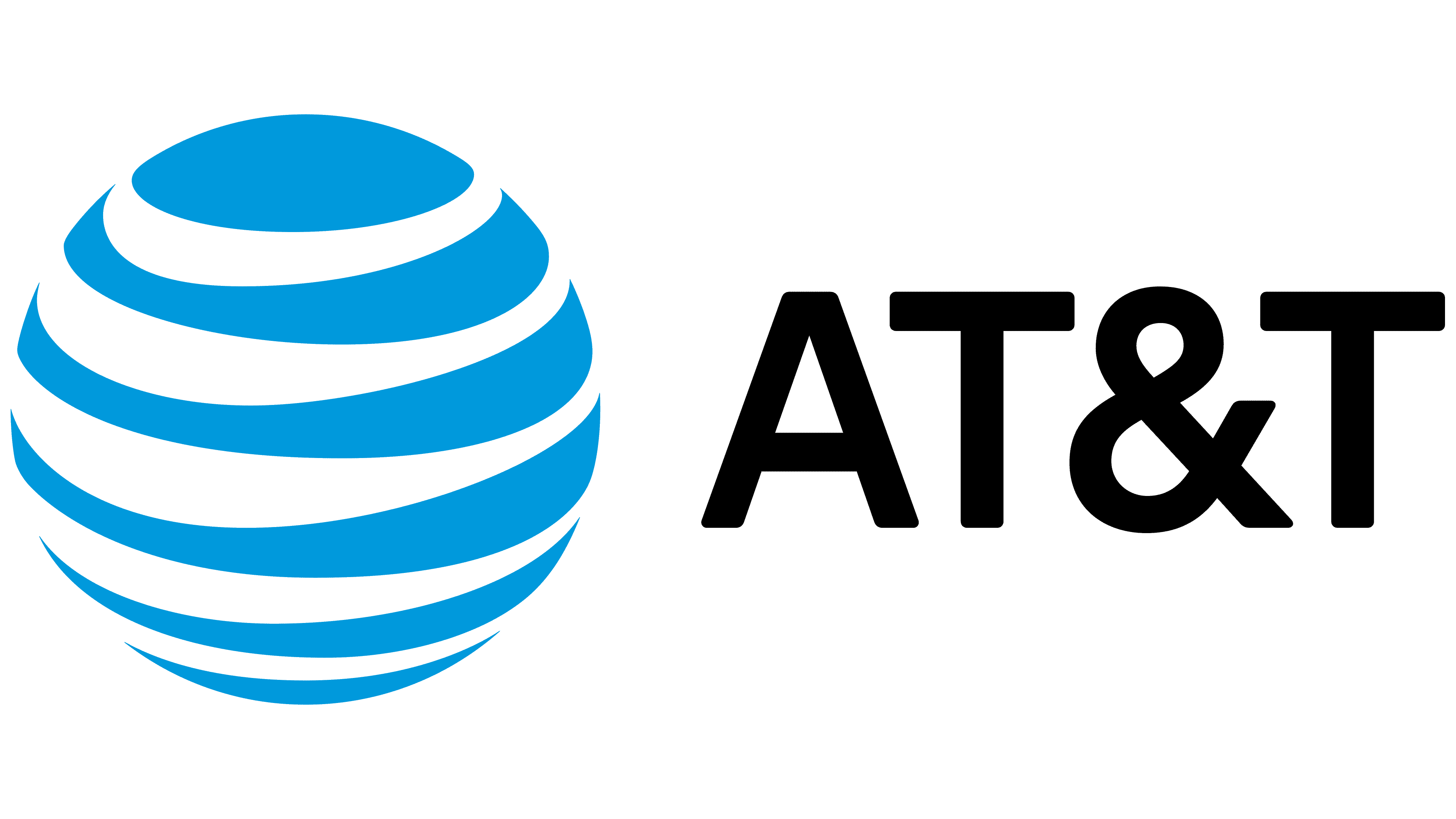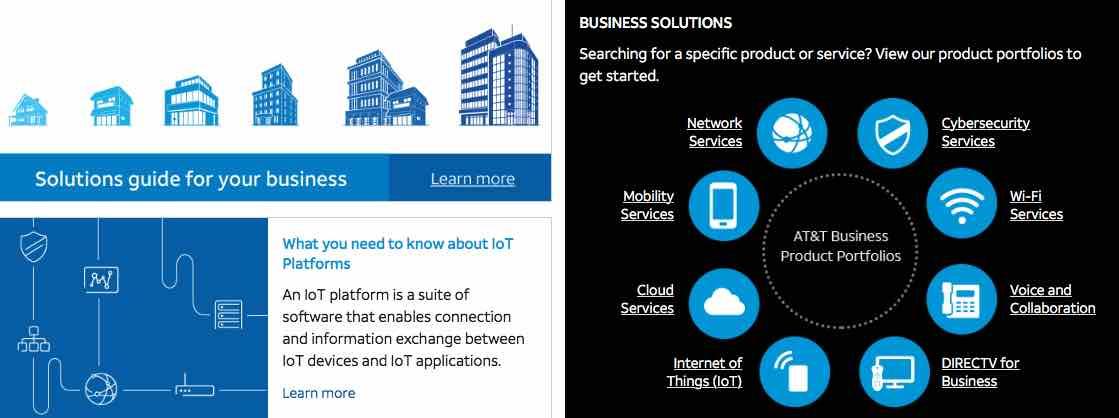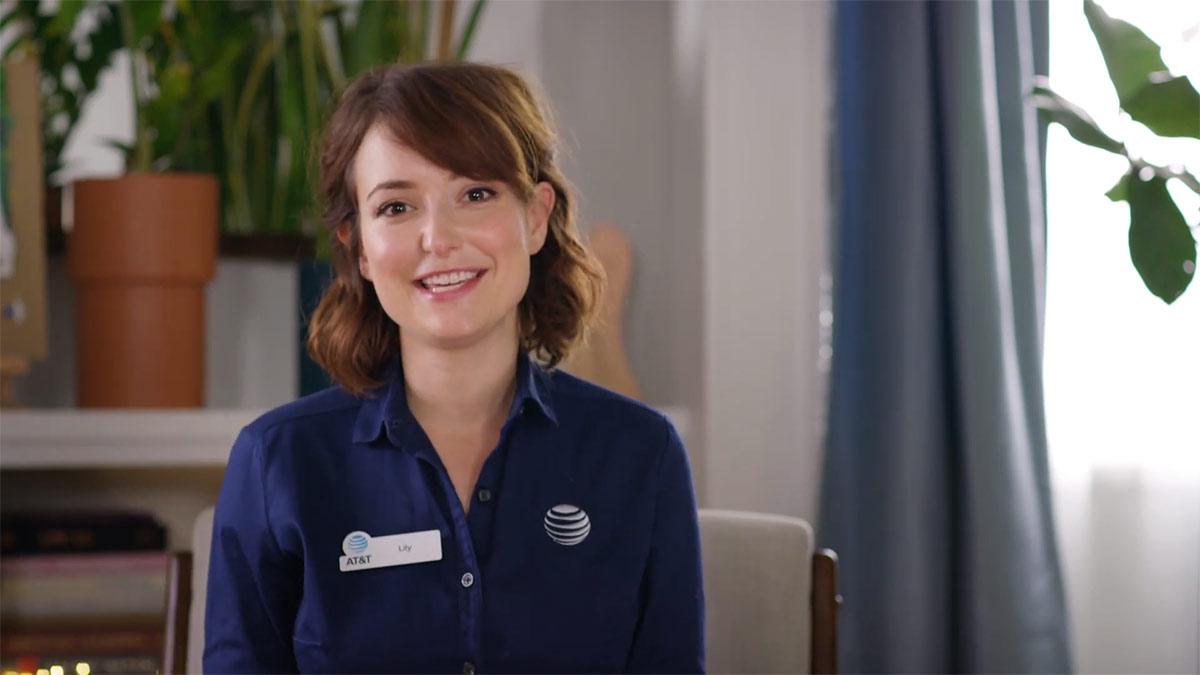AT&T has been around for over 145 years. That means AT&T’s Marketing Strategy has had to evolve throughout time just to stay afloat.
AT&T leads the U.S. telecom provider industry with nearly $172 billion in revenue. In this AT&T marketing strategy case study, you’ll see the history behind the world’s first mobile empire and how it became that way.
AT&T History
AT&T has an extensive history that dates back to when Alexander Graham Bell invented the telephone in 1876. With over 145 years of experience, the company has dealt with many events that altered how AT&T looks today.
We’ll outline some of the significant events in their timeline so you can understand how they became the leading telecom provider in the United States.
- 1876: Alexander Graham Bell invents the telephone and names his new company “Bell Telephone Company”
- 1882: Now named “American Bell Telephone Co.”, the business acquires Western Electric
- 1913: Kingsbury Commitment antitrust settlement forces the business to let other telephone companies access their network. They also need government approval before buying out any competition.
- 1949: The government forces the company to give up control of Western Electric, the only supplier of phones that could operate within their network
- 1974: A suit by the Justice Department breaks up the business, and it becomes seven different companies known as “Baby Bells”
- 1996: Telecommunications Act of 1996 changes the competition, and several “Baby Bells” merge again. AT&T now operates into three companies (AT&T Corp., Lucent Technologies Inc., and the NCR Corp.)
- 2005: SBC acquired AT&T Corp. and creates the AT&T we know today
- 2013: AT&T buys Cricket
- 2015: AT&T buys Iusacell and Nextel Mexico while acquiring DIRECTV, making it the world’s largest pay TV provider

As you can see, AT&T had to juggle government interference while attempting to sell their product and buying out competitors. AT&T has continued to thrive despite their troubles and has expanded to now own over 98 other companies.
AT&T Marketing Mix
Marketing Mix
A marketing mix provides the framework for a company’s sales strategy. Within a marketing mix, you’ll see four key elements that determine how a company will reach their goals.
AT&T’s marketing mix shows how they use product, price, place, and promotion to reach their business goals.
Product
AT&T has a variety of different products that relate to telecommunications. They offer mobile phone plans, fixed-line telephones, and broadband internet services.
AT&T also provides digital security, digital television, satellite television, radio, and streaming services. Most of their products and services can be adjusted to fit their customers’ individual needs.
Their customizable plans are prevalent in their pricing strategy.
Price
To sustain themselves in a competitive market, AT&T has had to develop a pricing strategy that works for them. They’ve split their strategy into competitive and differentiated pricing to do this.
AT&T has a pricing plan that beats out their competition. Many consumers can get the most affordable option by offering family plans and rollover minute plans.
Their plans also allow consumers to customize their plans depending on their needs. They offer military discounts, data messaging options, prepaid, and share advantage plans.
Luckily for their customers, they can receive their customized plans worldwide.
Place
AT&T can reach customers everywhere in the United States, contributing to their large market share. Their services can be used in over 200 countries throughout the world.
They also use high-traffic areas within malls and retail stores like Walmart and Best Buy to show off their products. AT&T places their products where their customers are most likely to be.
After they choose the best place for their products, they can switch over to how they will promote them.
Promotion
Because AT&T has deep historical roots, it’s pretty much a household name that almost everyone recognizes. However, they still allocate a large sum of their resources to advertising efforts.
AT&T has promoted their products using TV commercials, social media ads, and online endorsement videos. They’ve also used print ads and stressed the importance of internal branding within their strategy.
Below, we’ll expand on AT&T’s marketing strategies, and you’ll get to see how they’ve used promotion to sell their products.
AT&T Marketing Strategies
Battling Bureaucracy
As you’ve seen throughout the history of AT&T, they’ve had to battle the government a few times. With compromises on both sides, these laws have helped shape the company we know today.
One notable example is AT&T’s battle with statewide licensing laws. AT&T wanted to enter the market to compete with Internet and television services and continue with phone services.
Unfortunately, there were many laws that restricted this, so AT&T had to start a campaign targeting state legislators. They promoted the benefits this action would have on community members.
They built a campaign around the promise of offering consumers more freedom to choose their options. AT&T convinced legislators that they would help connect consumers with multiple services, not just their phones.
What’s The Lesson? Promote Your Benefits!
Learn from this aspect of AT&T’s marketing strategy and outline the benefits your products and services bring to consumers.
Try to focus on what your product or service can help customers do. Highlight the results your product will bring.
Take the following into consideration when trying to angle your benefits:
- What is the problem you can help solve?
- How much are people willing to pay to solve the problem?
- Are there ways to fix the issue more efficiently?
- What’s causing the problem?
- Can you solve the problem long-term or short-term?
You can use case studies to showcase how your products have helped other customers with the same problem. This way, potential customers will be able to see how your product can assist them.
Audience Segmentation And Positioning
AT&T is particular with who they target. Because they strive to bring customers together, their audience consists of people who want to be connected.
They see a need in those missing out on life events because they don’t get their messages.
One example is AT&T’s “taco party” commercial.
The commercial opens up at an office taco party. One man walks up to his coworkers and seems upset that he wasn’t invited to partake.
It turns out the man was invited, but his phone service didn’t deliver the message until later. AT&T used this example to market to people who have a fear of missing out (FOMO).
Targeting a specific demographic with similar problems makes the advertisement more effective.
What’s The Lesson? Target Specific Audiences!
Finding out more about your target audience allows you to adjust your marketing strategies to their interests. This can help you gauge how likely they are to make a purchase.
Segment your audience by their:
- Demographics (age, gender, ethnicity)
- Psychographics (hobbies, interests, lifestyle)
- Geographics (country, state, providence)
Once you determine who you want to target, you can learn what motivates them to act. Incorporating those factors into your marketing efforts allows you to better connect with your audience, encouraging purchase-making decisions.
Partnerships and Personas
AT&T is a well-known sponsor for various sports teams and organizations. These include collegiate-level sports teams, as well as the NBA and WNBA.
AT&T even sponsors a variety of sports and entertainment venues throughout the U.S. Some of those are:
- AT&T Stadium in Arlington, Texas (Home of Dallas Cowboys)
- AT&T Park in San Francisco, California (Home of the San Francisco Giants)
- AT&T Center in San Antonio, Texas (Hosts 3 sports teams, along with the San Antonio Stock Show & Rodeo)
Sponsoring these venues allows AT&T to communicate with sports fans.
In addition to using partnerships to connect with consumers, AT&T has also personified their brand. You may have seen actress Milana Vayntrub playing the persona Lily Adams in a variety of commercials.
She brings a voice to the brand and allows the company to connect more with viewers. In the commercials, she is portrayed as happy and helpful, traits AT&T wants to encompass.
What’s The Lesson? Connect With People!
When you connect with your audience, they’re more likely to look favorably on your brand and share your content with others. This hugely impacts word-of-mouth marketing efforts.
Follow these tips on how to use your content to connect with your audience:
- Teach them something they want to learn
- Give your audience a space to ask questions
- Listen to feedback
- Use a variety of content (video, image, text, gif)
- Show your audience similar values
- Provide value to your readers
- Be authentic
76% of consumers state that they would rather buy from a brand they feel connected to than their competitors. This is why it’s so important to align your brand values with the values of your target audience.
Digital First Emphasis
Because AT&T’s history goes back so far, they’ve had to adjust their marketing strategy to grow with the times. One massive change of strategy is AT&T’s digital-first campaign.
With consumers’ media habits changing rapidly, AT&T had to find new ways to reach their customers. They switched gears and decided to emphasize digital media within their marketing efforts.
Cathy Coughlin, CMO of AT&T, spoke about the company’s decision in an interview. She explained how her team understands and recognizes consumer trends.
Cathy explained the difficult part of the process: determining whether or not the trends are here to stay. They must decide if these will last long-term or if these habits are simply short-term fads.
What’s The Lesson? Adapt To Consumer Trends!
AT&T’s marketing strategy quickly became pointed toward how they could use digital media to reach consumers. If you want to survive as long as they have, you need to adapt your strategy depending on consumer trends.
To stay on top of consumer behavior, listen to your customer’s needs and wants. Below are some tips on how to do that:
- Look to social networking sites
- Start crowdsourcing
- Read published research
- Host focus groups
- Create surveys
Recognizing these trends and adapting your marketing strategy to your findings help keep you relevant in a competitive market.
Competitive Pricing
As seen before, AT&T has an aggressive pricing strategy within their marketing mix.
They allow their customers to adjust their plans based on their needs. That way, they’re not paying extra for tools they don’t use.
AT&T offers veterans or military discounts and also encourages brand loyalty with their loyalty program.
What’s The Lesson? Break Up Your Pricing Strategy
Breaking up your pricing plans allows you to reach a variety of customers. Like AT&T’s marketing strategy, you can create customizable plans, so each customer gets what they need.
If you want to break up your pricing strategy, you could offer:
- Discounts
- Payment Plans
- Loyalty Rewards
- Vouchers
- Free Trials
- Cash Back
Offering incentives and creating different pricing strategies encourages consumers to make a purchase. It even helps encourage customers to continue their services or monthly plans.
Investing In Employees
AT&T knows that a huge reason they’re so successful is their staff members. That’s why they decided to invest $166 million into their employees.
That money went toward diversity, equity, and inclusion training for employees at every level, including executives. They also offered a portion to employees who were affected by COVID-19.
Doing this creates a healthier company culture and fosters personal and professional growth opportunities. In return, the employees are happier at their jobs and care about the work they produce, which increases ROI.
What’s The Lesson: Retain Your Talent
Put your resources into the people who generate revenue for your company. After all, it’s cheaper to keep existing talent than hiring and training new employees.
It takes about 6 to 9 months of the worker’s salary to replace them.
Below are some tips for maintaining a high employee retention rate:
- Ensure your employees are engaged
- Ensure they’re playing to their strengths
- Recognize hard work
- Create a positive onboarding experience
- Provide paths for growth within the company
- Build a positive company culture
- Offer incentives
Using resources to invest in your employees pays off. Employees are more engaged, view the brand positively, represent the brand well, and recommend it to others.
Answering The Call To Success
This AT&T marketing strategy case study outlined how the country’s biggest telecommunication company has thrived for 145 years. You can take these lessons and apply them to your strategy.
If you outline your products’ benefits, adapt to your consumers’ needs, and embrace partnerships, you too can thrive in a competitive market. Remember to invest in what brings you the most revenue and provides the most value to your audience.
The future of your business is calling. Take what you learned from AT&T’s marketing strategy, and pick up the phone.






